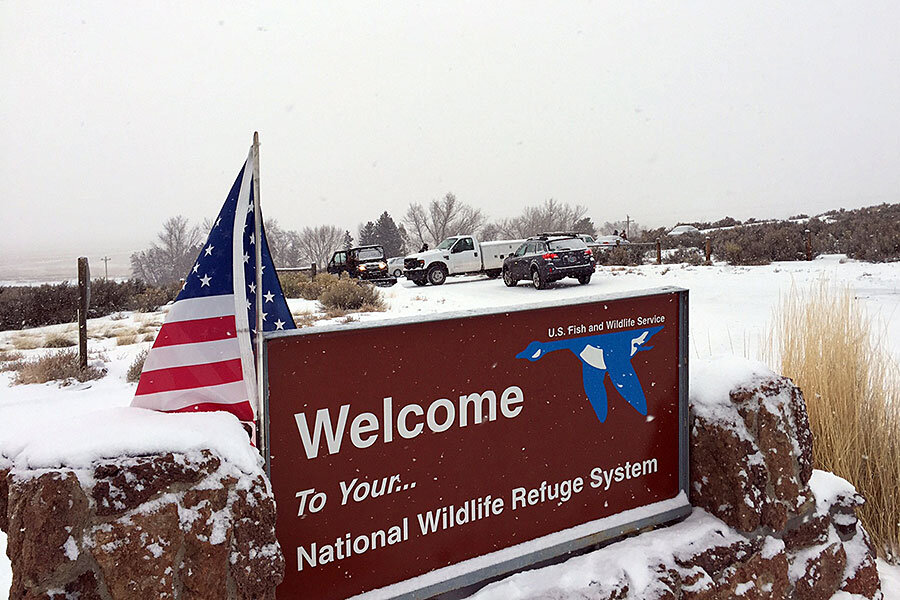Oregon standoff: How will it end?
Loading...
| Princeton, Ore.
Federal law enforcement officials on Monday sought to bring a peaceful end to the weekend occupation of a headquarters of an Oregon U.S. wildlife refuge by self-styled militiamen, while authorities said all staff at the facility were safe.
The occupation, which began on Saturday, is the latest skirmish over federal land management in the western United States. It followed a march in Burns, a small city about 50 miles (80 km) north of the Malheur National Wildlife Refuge, in protest over the imminent jailing of ranchers Dwight Hammond Jr. and his son, Steven Hammond. The FBI declined to give details on plans by federal officials.
The occupation was led by Ammon Bundy, the son of Cliven Bundy, a Nevada rancher whose family staged a 2014 armed protest against federal land management officials that ended with authorities backing down, citing safety concerns.
A lawyer for the Hammonds sought to distance his clients from Bundy and his armed band, saying they did not speak for the family.
Hammond and his son, convicted in 2012 of setting fires that spread to public land, traveled to Los Angeles on Sunday evening to surrender to federal authorities, according to their lawyer W. Alan Schroeder. They were to be sent back to prison after federal prosecutors won an appeal that resulted in their re-sentencing to longer terms.
The incident is part of a decades-old conflict between ranchers and the federal government over Washington's management of hundreds of thousands of range land. Critics of the federal government say it often oversteps its authority and exercises arbitrary power over land use without sufficient accountability.
"Due to safety considerations for both those inside the refuge as well as the law enforcement officers involved, we will not be releasing any specifics with regards to the law enforcement response," the Federal Bureau of Investigation said in a statement.
The Hammond ranch borders on the southern edge of the Oregon refuge, a bird sanctuary in the arid high desert in the eastern part of the state, about 305 miles (490 km) southeast of Portland.
The U.S. Fish and Wildlife Service said late Sunday that all of its staff from the facility were safe and accounted for.
"Thanks for your concern re the situation at Malheur NWR," the agency said on Twitter. "We are working to resolve this peacefully."
The Bundy ranch standoff drew hundreds of armed protesters after the Bureau of Land Management sought to seize Bundy's cattle because he refused to pay grazing fees. Federal agents backed down in the face of the large numbers of armed protesters and returned hundreds of cattle.
Bundy told a press conference on Sunday that some of the occupiers were armed but did not plan violence.
(Reporting by Jim Urquhart; Additional reporting by Suzannah Gonzales in Chicago; Writing by Scott Malone; Editing by Jeffrey Benkoe)





